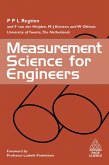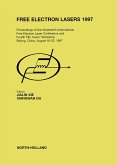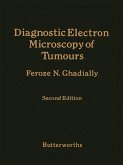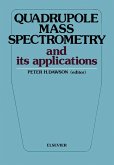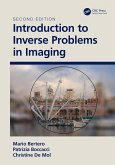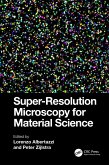114,95 €
114,95 €
inkl. MwSt.
Sofort per Download lieferbar

57 °P sammeln
114,95 €
Als Download kaufen

114,95 €
inkl. MwSt.
Sofort per Download lieferbar

57 °P sammeln
Jetzt verschenken
Alle Infos zum eBook verschenken
114,95 €
inkl. MwSt.
Sofort per Download lieferbar
Alle Infos zum eBook verschenken

57 °P sammeln
- Format: PDF
- Merkliste
- Auf die Merkliste
- Bewerten Bewerten
- Teilen
- Produkt teilen
- Produkterinnerung
- Produkterinnerung

Bitte loggen Sie sich zunächst in Ihr Kundenkonto ein oder registrieren Sie sich bei
bücher.de, um das eBook-Abo tolino select nutzen zu können.
Hier können Sie sich einloggen
Hier können Sie sich einloggen
Sie sind bereits eingeloggt. Klicken Sie auf 2. tolino select Abo, um fortzufahren.

Bitte loggen Sie sich zunächst in Ihr Kundenkonto ein oder registrieren Sie sich bei bücher.de, um das eBook-Abo tolino select nutzen zu können.
This fully illustrated text explains the basic measurement techniques, describes the commercially available instruments and provides an overview of the current perception of 3-D topography analysis in the academic world and industry, and the commonly used 3-D parameters and plots for the characterizing and visualizing 3-D surface topography.
It also includes new sections providing full treatment of surface characterization, filtering technology and engineered surfaces, as well as a fully updated bibliography.
- Geräte: PC
- ohne Kopierschutz
- eBook Hilfe
Andere Kunden interessierten sich auch für
![Measurement Science for Engineers (eBook, PDF) Measurement Science for Engineers (eBook, PDF)]() Paul RegtienMeasurement Science for Engineers (eBook, PDF)66,95 €
Paul RegtienMeasurement Science for Engineers (eBook, PDF)66,95 €![Free Electron Lasers 1997 (eBook, PDF) Free Electron Lasers 1997 (eBook, PDF)]() Free Electron Lasers 1997 (eBook, PDF)282,95 €
Free Electron Lasers 1997 (eBook, PDF)282,95 €![Diagnostic Electron Microscopy of Tumours (eBook, PDF) Diagnostic Electron Microscopy of Tumours (eBook, PDF)]() Feroze N. GhadiallyDiagnostic Electron Microscopy of Tumours (eBook, PDF)52,95 €
Feroze N. GhadiallyDiagnostic Electron Microscopy of Tumours (eBook, PDF)52,95 €![Quadrupole Mass Spectrometry and Its Applications (eBook, PDF) Quadrupole Mass Spectrometry and Its Applications (eBook, PDF)]() Quadrupole Mass Spectrometry and Its Applications (eBook, PDF)40,95 €
Quadrupole Mass Spectrometry and Its Applications (eBook, PDF)40,95 €![Introduction to Inverse Problems in Imaging (eBook, PDF) Introduction to Inverse Problems in Imaging (eBook, PDF)]() M. BerteroIntroduction to Inverse Problems in Imaging (eBook, PDF)49,95 €
M. BerteroIntroduction to Inverse Problems in Imaging (eBook, PDF)49,95 €![IoT Sensors (eBook, PDF) IoT Sensors (eBook, PDF)]() Vinod Kumar KhannaIoT Sensors (eBook, PDF)54,95 €
Vinod Kumar KhannaIoT Sensors (eBook, PDF)54,95 €![Super-Resolution Microscopy for Material Science (eBook, PDF) Super-Resolution Microscopy for Material Science (eBook, PDF)]() Super-Resolution Microscopy for Material Science (eBook, PDF)52,95 €
Super-Resolution Microscopy for Material Science (eBook, PDF)52,95 €-
-
-
This fully illustrated text explains the basic measurement techniques, describes the commercially available instruments and provides an overview of the current perception of 3-D topography analysis in the academic world and industry, and the commonly used 3-D parameters and plots for the characterizing and visualizing 3-D surface topography.
It also includes new sections providing full treatment of surface characterization, filtering technology and engineered surfaces, as well as a fully updated bibliography.
It also includes new sections providing full treatment of surface characterization, filtering technology and engineered surfaces, as well as a fully updated bibliography.
Dieser Download kann aus rechtlichen Gründen nur mit Rechnungsadresse in A, B, BG, CY, CZ, D, DK, EW, E, FIN, F, GR, HR, H, IRL, I, LT, L, LR, M, NL, PL, P, R, S, SLO, SK ausgeliefert werden.
Produktdetails
- Produktdetails
- Verlag: Elsevier Science & Techn.
- Seitenzahl: 320
- Erscheinungstermin: 1. Juni 2000
- Englisch
- ISBN-13: 9780080542980
- Artikelnr.: 38125899
- Verlag: Elsevier Science & Techn.
- Seitenzahl: 320
- Erscheinungstermin: 1. Juni 2000
- Englisch
- ISBN-13: 9780080542980
- Artikelnr.: 38125899
- Herstellerkennzeichnung Die Herstellerinformationen sind derzeit nicht verfügbar.
Professor Liam Blunt is Taylor Hobson Professor of Surface Metrology at the University of Huddersfield, UK. He is author of numerous published papers and other contributions on surface technology, and is co-author with Ken Stout of Three Dimensional Surface Topography (published by Penton Press, 2000).
Part I: Development of Surface Characterization1. History of the subject 2. Development of surface parameters 3. Progress in filtering 4. Instrumentation 5. Development of integrated 3-D parameter set 6. Future Developments 7. Contents of the proposed standard. Part II: Instruments and Measurement Techniques of Three-dimensional Surface Topography1. Introduction 2. Differences in measurement and analysis methods for 3-D and 3-D surface topography 3. Stylus instruments 4. Optical instruments 5. Non-optical scanning microscopy 6. Characteristics of the different types of available instruments 7. Conclusions. Part III: Filtering Technology for Three-Dimensional Surface Topography Analysis. 1. Nomenclature 2. Introduction 3. History of surface data filters 4. 3-D general filtering techniques 5. Robust filters 6. The problems of frequency domain filters 7. Wavelet digital filters 8. Motif filters 9. Conclusion. Part IV: Visualization Techniques and Parameters for Characterizing Three-Dimensional Surface Topography 1. Nomenclature 2. Introduction 3. Surface topography in three dimensions 4.Visualization techniques 5. Specification of parameters 6. A primary parameter set - amplitude, height distribution, spatial, hybrid and functional. Part V: Applications of Three-Dimensional Surface Metrology 1. Introduction 2. Measurement of a gear surface with a stylus lead screw-driven instrument 3. Measurement of an engine bore surface with a stylus linear motor-driven instrument 4. Measurement of thick-film superconductors with a focus detection instrument 5. Measurement of human skin with a focus detection instrument 6. Measurement of the topography of hip prostheses using phase shifting interferometer 7. Measurement of a polished brass surface using a scanning tunnelling microscope 8. Characterization of surface topography of indentations 9. Conclusions. Part VI: Engineered Surfaces - A Philosophy of Manufacture 1. A philosophy of manufacture 2. The complex interrelationships in producing an engineered surface 3. Surface topographical features and their effect on the functional performance of surfaces 4. Surface mechanical features that can effect the functional performance of surfaces (surface integrity) 5. Subsurface features that can effect the functional performance of surfaces 6. Some examples of engineered surfaces 7. Future approach to the engineered surface 8. An example of a comprehensive testing procedure 9. FE simulations 10. Final comments.
Part I: Development of Surface Characterization1. History of the subject 2. Development of surface parameters 3. Progress in filtering 4. Instrumentation 5. Development of integrated 3-D parameter set 6. Future Developments 7. Contents of the proposed standard. Part II: Instruments and Measurement Techniques of Three-dimensional Surface Topography1. Introduction 2. Differences in measurement and analysis methods for 3-D and 3-D surface topography 3. Stylus instruments 4. Optical instruments 5. Non-optical scanning microscopy 6. Characteristics of the different types of available instruments 7. Conclusions. Part III: Filtering Technology for Three-Dimensional Surface Topography Analysis. 1. Nomenclature 2. Introduction 3. History of surface data filters 4. 3-D general filtering techniques 5. Robust filters 6. The problems of frequency domain filters 7. Wavelet digital filters 8. Motif filters 9. Conclusion. Part IV: Visualization Techniques and Parameters for Characterizing Three-Dimensional Surface Topography 1. Nomenclature 2. Introduction 3. Surface topography in three dimensions 4.Visualization techniques 5. Specification of parameters 6. A primary parameter set - amplitude, height distribution, spatial, hybrid and functional. Part V: Applications of Three-Dimensional Surface Metrology 1. Introduction 2. Measurement of a gear surface with a stylus lead screw-driven instrument 3. Measurement of an engine bore surface with a stylus linear motor-driven instrument 4. Measurement of thick-film superconductors with a focus detection instrument 5. Measurement of human skin with a focus detection instrument 6. Measurement of the topography of hip prostheses using phase shifting interferometer 7. Measurement of a polished brass surface using a scanning tunnelling microscope 8. Characterization of surface topography of indentations 9. Conclusions. Part VI: Engineered Surfaces - A Philosophy of Manufacture 1. A philosophy of manufacture 2. The complex interrelationships in producing an engineered surface 3. Surface topographical features and their effect on the functional performance of surfaces 4. Surface mechanical features that can effect the functional performance of surfaces (surface integrity) 5. Subsurface features that can effect the functional performance of surfaces 6. Some examples of engineered surfaces 7. Future approach to the engineered surface 8. An example of a comprehensive testing procedure 9. FE simulations 10. Final comments.

